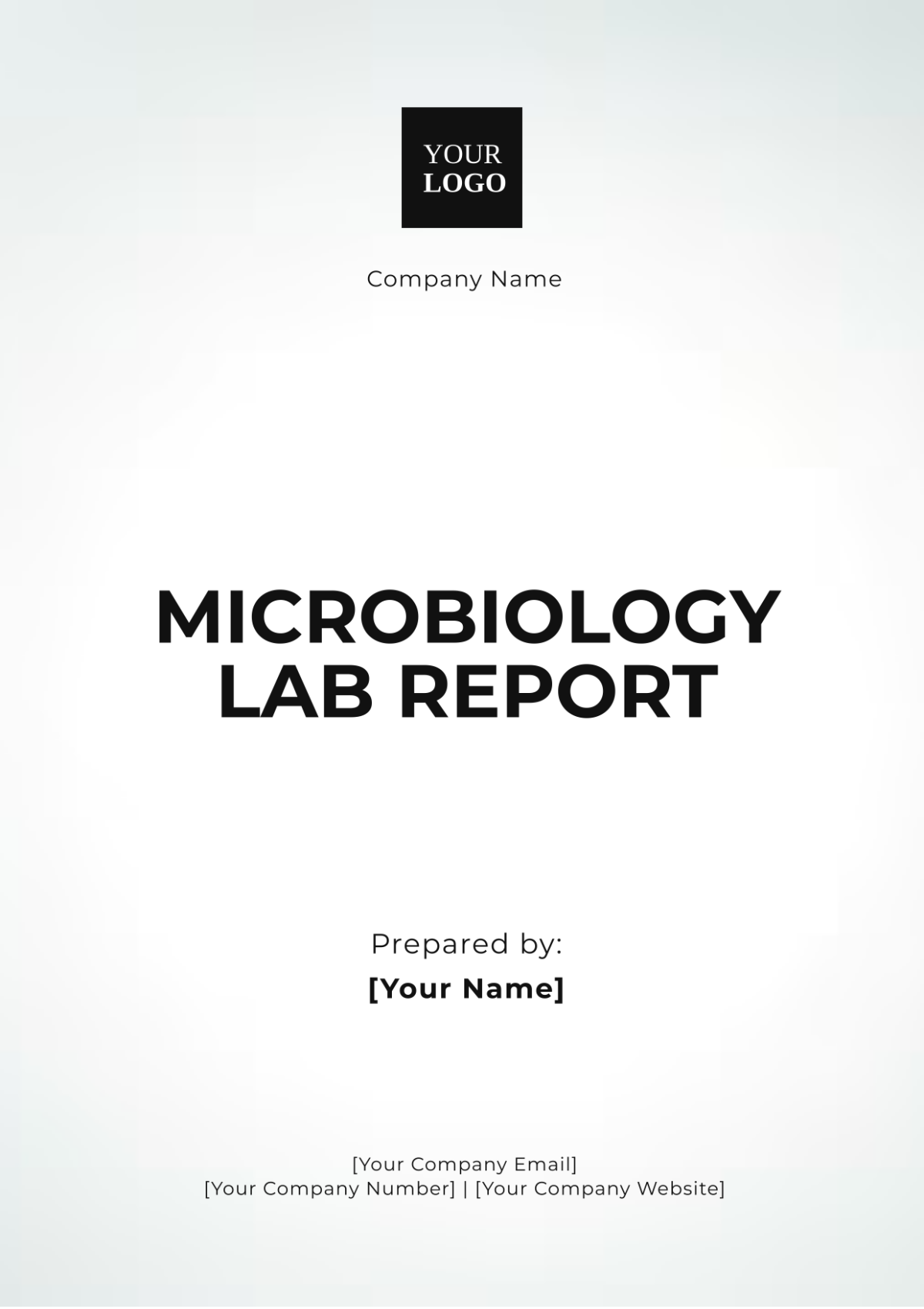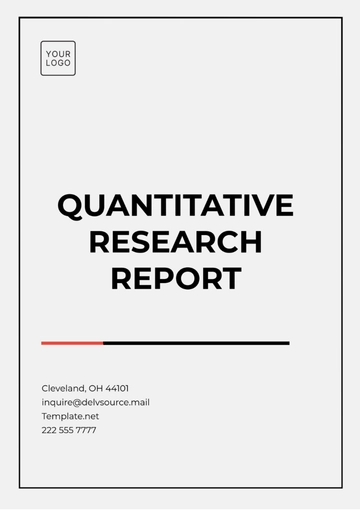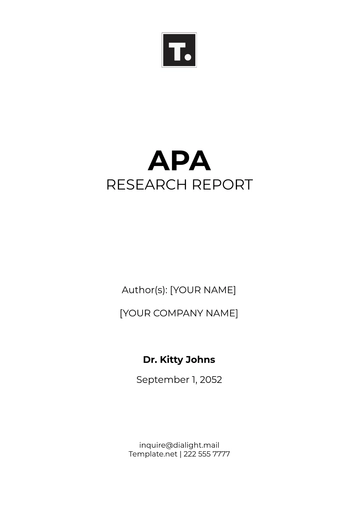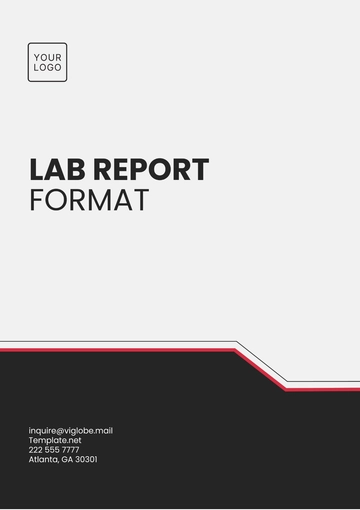Free Microbiology Lab Report

Title: Analysis of Antibiotic Resistance in Escherichia coli
Prepared by: [Your Name]
Organization: [Your Company Name]
Date: [Submission Date]
1. Abstract
This report presents a comprehensive analysis of antibiotic resistance in Escherichia coli (E. coli) isolates obtained from clinical samples. The study aims to determine the resistance profiles of E. coli strains against a range of commonly used antibiotics. Through the use of disc diffusion and broth microdilution methods, we identified multiple patterns of resistance, providing insights into the prevalence of resistant strains in the study population.
2. Introduction
Antibiotic resistance is a significant public health concern, particularly in the context of bacterial infections caused by E. coli. E. coli, a common pathogen, can develop resistance to antibiotics, complicating treatment strategies. This report details the methods used to assess resistance and susceptibility, analyzes the results, and discusses their implications for treatment and public health.
Objectives
To evaluate the resistance of E. coli strains to a panel of antibiotics.
To identify patterns of resistance and susceptibility.
To assess the clinical relevance of the findings.
3. Materials and Methods
3.1 Sample Collection
E. coli strains were isolated from clinical samples, including urine and blood cultures, obtained from a local hospital.
3.2 Antibiotic Testing
The following antibiotics were tested:
Ampicillin
Ciprofloxacin
Gentamicin
Tetracycline
Trimethoprim-Sulfamethoxazole
3.3 Testing Methods
(a) Disc Diffusion Method
The disc diffusion method was used to assess antibiotic resistance. Paper discs impregnated with antibiotics were placed on agar plates inoculated with E. coli. Zones of inhibition were measured to determine susceptibility.
(b) Broth Microdilution Method
The broth microdilution method was employed to determine the Minimum Inhibitory Concentration (MIC) of antibiotics. Serial dilutions of antibiotics were prepared in a microtiter plate, and E. coli growth was assessed.
3.4 Data Analysis
Data were analyzed using standard microbiological techniques to categorize resistance and susceptibility profiles.
4. Results
4.1 Disc Diffusion Results
The following table summarizes the results of the disc diffusion method:
Antibiotic | Susceptible | Intermediate | Resistant |
|---|---|---|---|
Ampicillin | 30 strains (60%) | 10 strains (20%) | 10 strains (20%) |
Ciprofloxacin | 40 strains (80%) | 5 strains (10%) | 5 strains (10%) |
Gentamicin | 35 strains (70%) | 5 strains (10%) | 10 strains (20%) |
Tetracycline | 25 strains (50%) | 15 strains (30%) | 10 strains (20%) |
Trimethoprim-Sulfamethoxazole | 32 strains (64%) | 8 strains (16%) | 10 strains (20%) |
4.2 Broth Microdilution Results
MIC values for each antibiotic are listed below:
Antibiotic | MIC Range (µg/mL) | Average MIC (µg/mL) |
|---|---|---|
Ampicillin | 4 - 64 | 16 |
Ciprofloxacin | 0.5 - 8 | 2 |
Gentamicin | 1 - 16 | 4 |
Tetracycline | 8 - 64 | 16 |
Trimethoprim-Sulfamethoxazole | 0.5 - 16 | 4 |
5. Discussion
5.1 Resistance Patterns
The data reveal significant resistance to ampicillin and tetracycline, with 20% of strains showing resistance. Ciprofloxacin and gentamicin were more effective, with higher susceptibility rates observed. The average MIC values indicate varying degrees of effectiveness for each antibiotic, highlighting the importance of tailoring antibiotic therapy based on resistance profiles.
5.2 Clinical Implications
The high resistance rates to ampicillin and tetracycline suggest that these antibiotics may not be effective for treating infections caused by E. coli in this study population. Ciprofloxacin and gentamicin remain viable options, though the presence of intermediate resistance in some strains necessitates cautious use.
5.3 Recommendations
Regular monitoring of antibiotic resistance patterns is essential for effective treatment strategies.
Consideration of alternative antibiotics or combination therapy may be necessary for resistant strains.
Implementation of stewardship programs to limit the development of further resistance.
6. Conclusion
The study provides valuable insights into the resistance profiles of E. coli strains isolated from clinical samples. The findings underscore the need for ongoing surveillance and informed decision-making in antibiotic therapy to combat resistance effectively.
7. References
Clinical and Laboratory Standards Institute. (2053). Performance Standards for Antimicrobial Susceptibility Testing.
Smith, J. & Jones, A. (2054). "Antibiotic Resistance in E. coli: A Comprehensive Review." Journal of Clinical Microbiology.
8. Appendices
8.1 Appendix A: Raw Data
Raw data files for disc diffusion measurements.
MIC values for each strain and antibiotic.
8.2 Appendix B: Additional Figures
Figure 1: Zone of inhibition for each antibiotic.
Figure 2: MIC values plotted for various antibiotics.
- 100% Customizable, free editor
- Access 1 Million+ Templates, photo’s & graphics
- Download or share as a template
- Click and replace photos, graphics, text, backgrounds
- Resize, crop, AI write & more
- Access advanced editor
Discover the pinnacle of efficiency with our Microbiology Lab Report Template, exclusively crafted by Template.net. Seamlessly blend innovation and convenience as you delve into the world of microbiology. Harness the power of our editable and customizable features, tailored to your unique needs. Elevate your workflow with our AI Editable Tool, simplifying the complex with every click.
You may also like
- Sales Report
- Daily Report
- Project Report
- Business Report
- Weekly Report
- Incident Report
- Annual Report
- Report Layout
- Report Design
- Progress Report
- Marketing Report
- Company Report
- Monthly Report
- Audit Report
- Status Report
- School Report
- Reports Hr
- Management Report
- Project Status Report
- Handover Report
- Health And Safety Report
- Restaurant Report
- Construction Report
- Research Report
- Evaluation Report
- Investigation Report
- Employee Report
- Advertising Report
- Weekly Status Report
- Project Management Report
- Finance Report
- Service Report
- Technical Report
- Meeting Report
- Quarterly Report
- Inspection Report
- Medical Report
- Test Report
- Summary Report
- Inventory Report
- Valuation Report
- Operations Report
- Payroll Report
- Training Report
- Job Report
- Case Report
- Performance Report
- Board Report
- Internal Audit Report
- Student Report
- Monthly Management Report
- Small Business Report
- Accident Report
- Call Center Report
- Activity Report
- IT and Software Report
- Internship Report
- Visit Report
- Product Report
- Book Report
- Property Report
- Recruitment Report
- University Report
- Event Report
- SEO Report
- Conference Report
- Narrative Report
- Nursing Home Report
- Preschool Report
- Call Report
- Customer Report
- Employee Incident Report
- Accomplishment Report
- Social Media Report
- Work From Home Report
- Security Report
- Damage Report
- Quality Report
- Internal Report
- Nurse Report
- Real Estate Report
- Hotel Report
- Equipment Report
- Credit Report
- Field Report
- Non Profit Report
- Maintenance Report
- News Report
- Survey Report
- Executive Report
- Law Firm Report
- Advertising Agency Report
- Interior Design Report
- Travel Agency Report
- Stock Report
- Salon Report
- Bug Report
- Workplace Report
- Action Report
- Investor Report
- Cleaning Services Report
- Consulting Report
- Freelancer Report
- Site Visit Report
- Trip Report
- Classroom Observation Report
- Vehicle Report
- Final Report
- Software Report





























